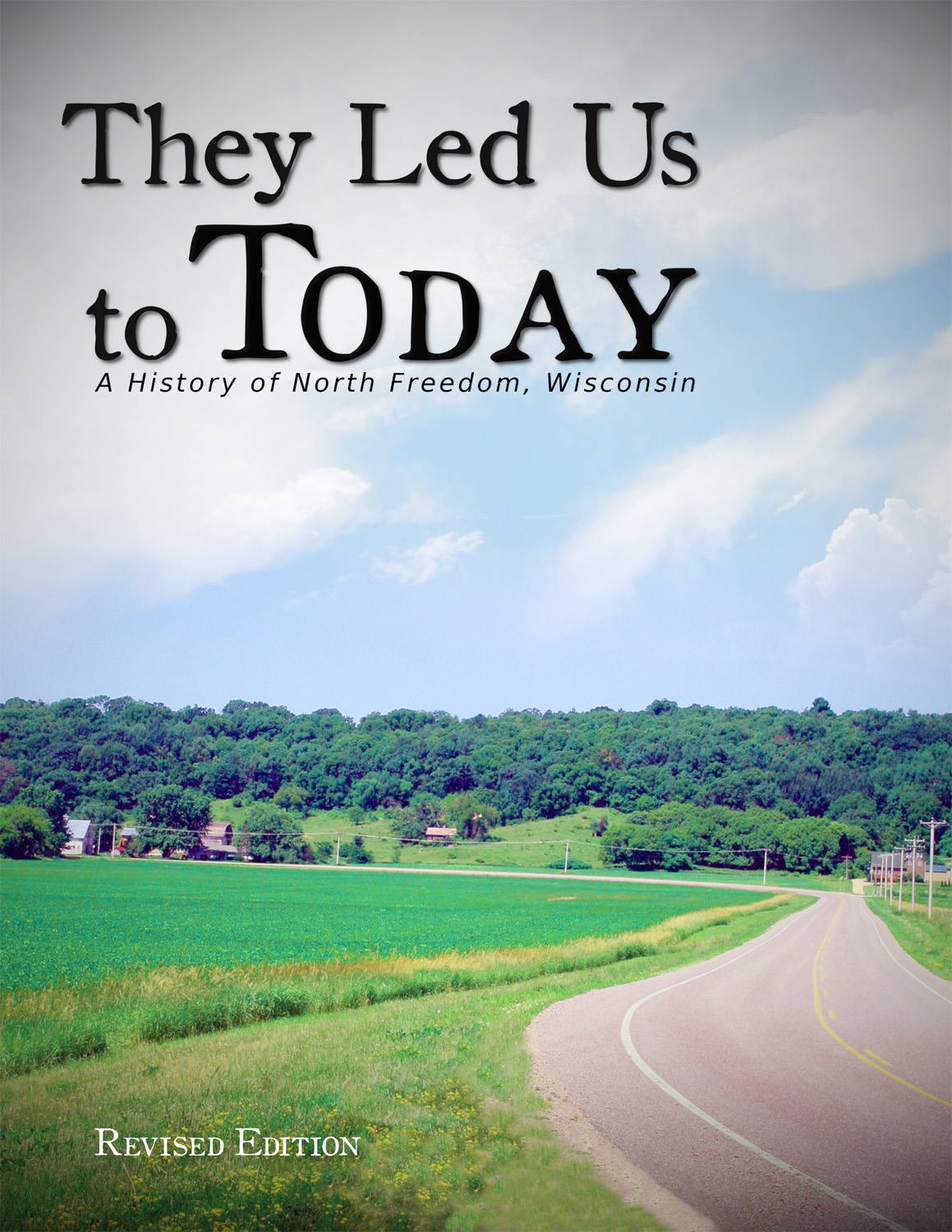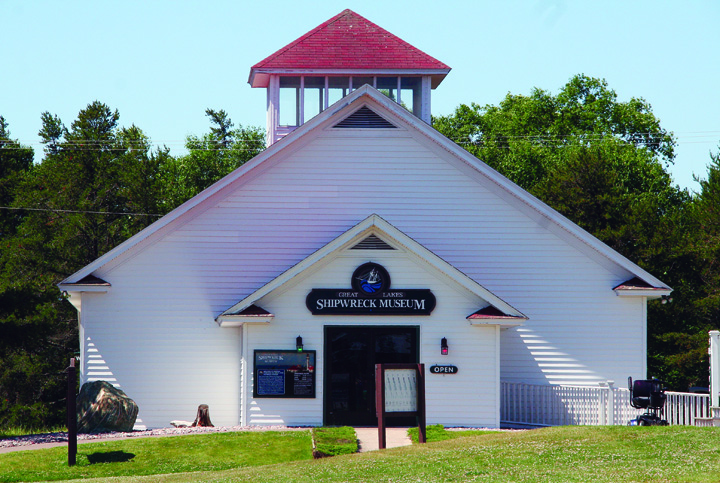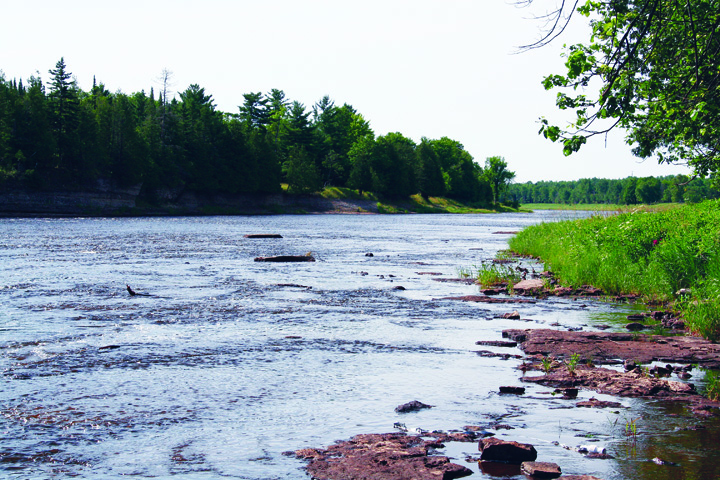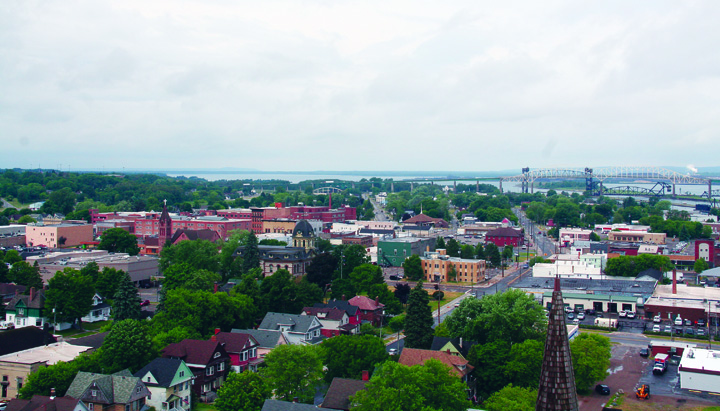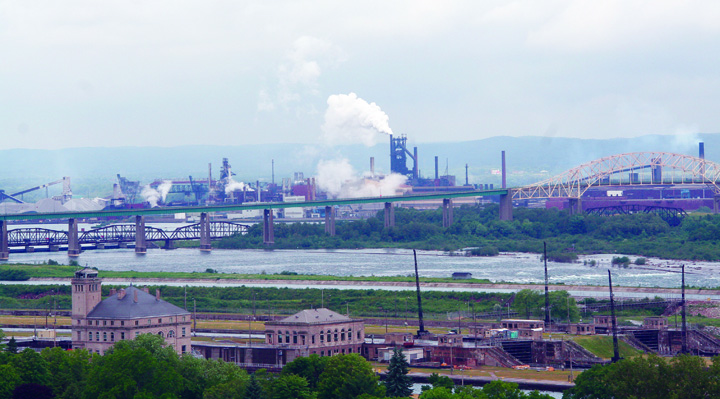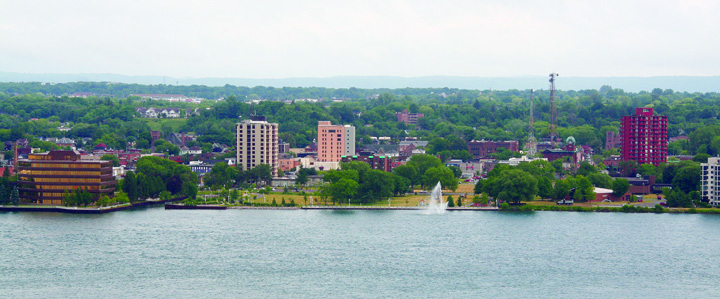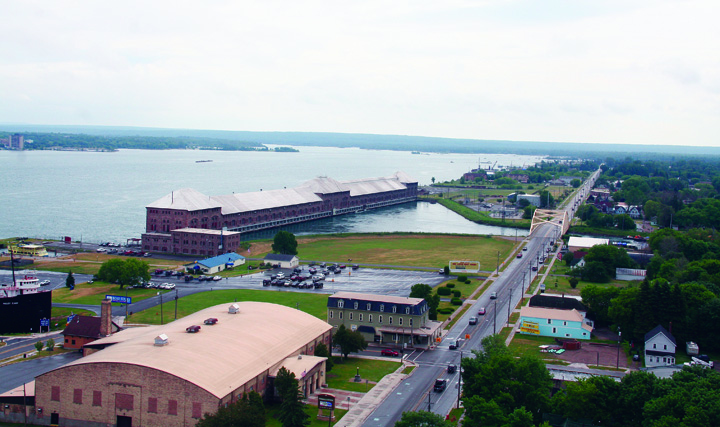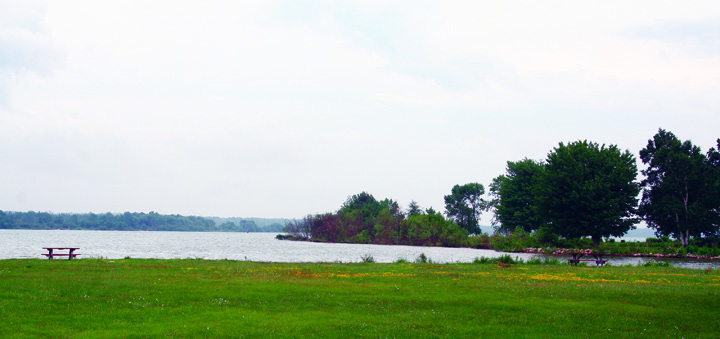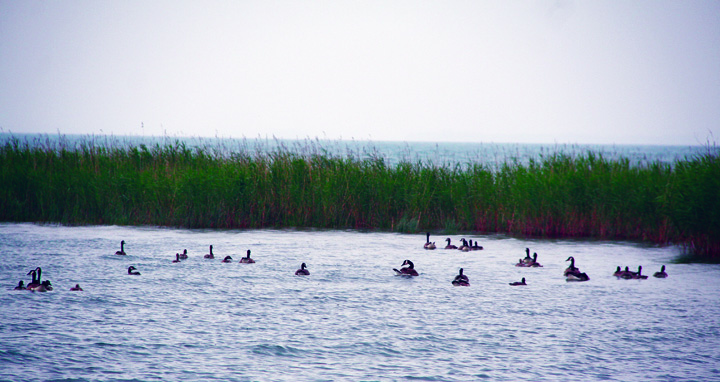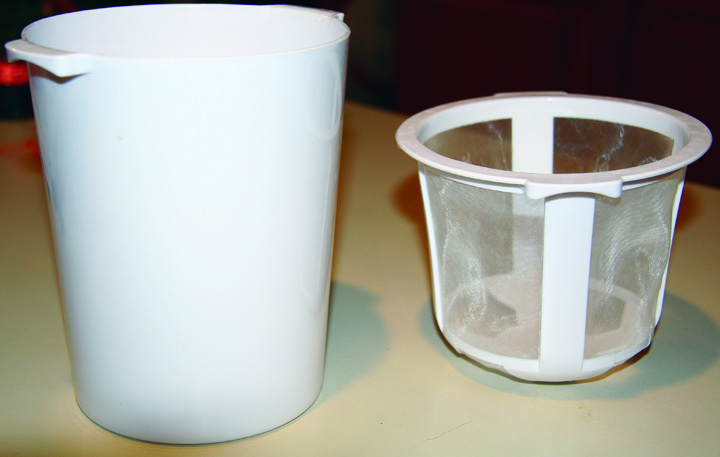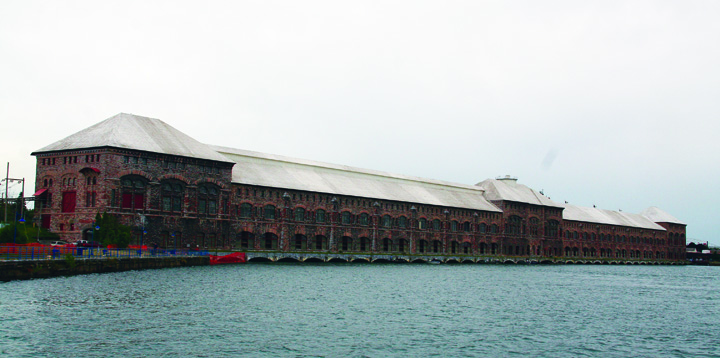By Michael Carignan
Like everyone else in this time of pandemic, my wife, Dawn, and I have gotten unpleasantly tired of not being able to travel where we wish, when we wish. One particular place we’ve missed greatly is the Pacific Northwest, in particular western Washington State.
My very first trip to western Washington had me arriving by car on Jan. 1, 1978. I arrived in Olympia around noon. It was 55 degrees out. Mt. Rainier’s snow covered lips strategically placed a long delicious kiss on the blue sky overhead. I thought I had arrived in heaven. (Because when I left Wisconsin the day after Christmas it was well below freezing and there was a foot of snow on the ground.) However, by four p.m. it had begun to rain. I didn’t see the sun again for 28 days, but the damage was done. I was in love with Washington and I stayed for three years while I finished up college.
As life would have it, I wasn’t able to share Washington with Dawn for the first time until our first anniversary in May of 1987. I think she fell in love with it just like I did.
We like to visit friends out there and see the beauty of the area as often as we can. For quite some time we returned every one to two years to visit. This year however was only the second time we’ve visited since 2015. We were supposed to go last year but had to cancel.
This past spring when signs of the pandemic losing its grip appeared we wasted no time in making arrangements for an August trip back there. In my opinion, August is the nicest time to visit western Washington. The rains have pretty much subsided, temperatures typically are 80 to 85 degrees in the daytime with little or no humidity in-land and 65 to 70 degrees along the ocean, again with no humidity but almost always a breeze.
We quickly found round-trip tickets on Southwest Airlines for $11 each plus credit card miles. Flight booked, things got a little more challenging. After exhausting every vacation rental website we could find online we were unable to find any openings in our preferred location, Moclips, on the north beach. (Although it is in the middle of the Washington shoreline, Moclips is considered the north beach because much of the southern half of the Washington coast is nice, sandy beaches open to the public with privately owned properties abutting the beaches, but going north, almost all of the properties abutting the beaches are either Native owned or part of the Olympic National Park.)

Many of the Salish tribes that reside along the north coast of Washington offer accommodations as well and we have had very pleasant stays at those when we’ve visited before, but the Native reservations, for the most part, remain in lock down and only residents are allowed on the grounds. Lock down of the reservations was another reason why finding a place on the beach was much harder this year.
Anyway, in a last ditch effort to find a place I stumbled upon a website I had not seen before, www.beachcombersnw.com. It only handles rentals along the Washington and Oregon coastlines. On that site I found one place which met our top priority of being on the beach. The rental was not on any of the other websites but it had dates open for exactly when we were planning to visit. Even more fantastic the downstairs apartment was located in the house just next to the place where we usually stayed. No more wasting time, we booked four nights during the lowest tides of August.
Any of you beach combers out there know exactly why we wanted low tides. Along with accompanying the waxing moon as it approaches the full moon, lower tides also provide the best opportunities to find all the wondrous deposits the ocean leaves behind as it ebbs, be it shell, critters, logs and weeds or man-made item, it’s always an adventure to see what one can find.
We had already made plans to stay at some good friends of ours’ house the first night and last two nights of our trip. That left one night of our stay open to either stay with them or find a place for one more night on the ocean. We really wanted to experience the full moon over the ocean so the search continued. The place we rented in Moclips was not available full moon night. We found some openings but none of them would rent for less than two nights except for motels and resorts. We finally settled on Quinault Beach Resort & Casino.
With travel to and from and accommodations set we had one last detail to take care of – a car rental. We like to rent cars away from the airport to save money, however every one of the car rental places we had used in the past had closed their doors during the pandemic. Our only option was the airport car rentals and they had jacked prices super high. I mentioned this in passing to our dear friends, Tom and Jan Balaban, and Jan pipes up that there is no need to rent a car because they have three of them and they offered us the use of one of them. I must say I didn’t expect or see that coming but very gratefully accepted the offer. Finally planning was completed except for small details, and those are often best done in the spur of the moment.
I don’t know about you, but I like the planning process; the hunt for places to stay or explore, the travel connections. Normally the planning process lasts only a couple of weeks and then I sit and wait until it’s time to go. This year however, what usually takes a couple of weeks took nearly three months due to all the pandemic crap. I have a healthy respect for the pandemic but it certainly has been a pain in the behind.
Anyway, now that I’ve wasted your time with my story about the planning, let’s get to the trip. Mid-August came around and in trying to get ready to travel my back went out and left me having a rough time even trying to walk. Believe me it was disheartening but I was determined to make the best of things. It happened about a day before we were to leave and I didn’t have time to go to the chiropractor so all I could do is ride it out until my back settled down on its own.
Tom and Jan picked us up at Sea-Tac Airport and took us to their home just north of Olympia. Jan prepared a wonderful supper of chili rellenos, among other things. It was delicious to say the least. Thanks. We spent the evening catching up and relaxing before bed. A breakfast of scones and jam with coffee prepared us for more travel the following morning.
We always rent places that allow us to do our own cooking rather than eating out at restaurants. We do some eating out but mainly cook at home. Olympia has a spectacular farmer’s market but it is only open Thursdays through Sundays, and this was Wednesday. I had gone on line and discovered a number of farm produce stands between Olympia and Moclips and so our first destination was to find one of those to purchase produce. One was located in Rochester just south of Olympia on U.S. Hwy 12. (Yes, the same U.S. Hwy. 12 running through Baraboo just six miles east of our home.) Somehow we missed the farm stand, but we weren’t worried for there were more stands along the way, including two not far from Moclips. A quick stop for groceries in Aberdeen and a farm stand in Hoquiam and we were on the final leg to Moclips.
The view driving through western Washington, whether along Hwy. 12 or Hwy. 8, up 101 and across to Pacific Beach, or staying close to the water on Hwy. 109, never gets old for me. With evergreens everywhere and rivers and creeks rushing toward the ocean, travel merges with pleasure, stress disintegrates into relaxation… ah, vacation.
Before long we were standing outside the dwelling where we would spend the next four nights, gazing at the ocean as the waves brake and carry on to the beach. Clouds had settled in over the ocean and the temperature was only about 60 degrees with a steady breeze. It was so refreshing with the smell of the ocean mixed with the scent of evergreens filling the air, a great relief from the previous three months of oppressive, humid heat. We unpacked the Prius Tom and Jan had lent us and settled in.
The entire west wall of our downstairs apartment was bay windows looking out over the ocean. With the covered porch to the south we had both indoor and outdoor options for enjoying the waves when not walking the beach.

It had been extremely dry and The Evergreen State showed more brown than green which forced a burning ban throughout the area. It really didn’t matter though because the sound of the waves drowned out the dryness. There are blackberry bushes between many of the beach houses and the ocean. The berries were ripe and seemingly unaffected by the drought. As expected, Dawn was soon down walking on the beach. My back was still a problem so I just sat on the porch with my binoculars and camera taking it all in from there.
The following morning Dawn rose at first light and hit the beach near low tide. She returned with pockets full of sand dollars. The beach at Moclips has always been plentiful with sand dollars. Dawn loves to collect the empty shells and give them as gifts to friends and co-workers. It’s tradition.
After breakfast we decided to go back to Hoquiam to visit a museum we had never visited before named The Polson Museum. On the list of National Historic Sites, the museum focuses on lumbering and the Polson family’s role.

The Polson Museum is housed in the 6,500 sq. ft. mansion of Arnold Polson along the banks of the historic Hoquiam River. Extensive gardens, landscaping, outdoor machinery and shop displays complement the mansion.
The mansion was erected in 1924, and was designed with 26 rooms, six bathrooms and four fireplaces. The Polsons lived in the mansion until 1965 when they left their Hoquiam home for Seattle. In 1976 the mansion was donated to the city, it has been the Polson Museum ever since.


The grounds surrounding the mansion include a blacksmith shop, railroad camp, hiking trails, picnic area and a rose garden. The day we visited a woman from Montesano, a town two cities away, was hard at work tending the rose garden. We strolled through the garden and talked with the lady who eagerly gave us information and answered what questions she could.

Much to our chagrin, however, the museum was still closed due to Covid-19. Plans were to reopen, but not until the day we were to fly back to Wisconsin. We made due by strolling the grounds and peeking in the windows.
The following day Tom and Jan joined us at Moclips just to spend the day. Dawn and I wanted to visit another museum as well right there in Moclips. The Museum of the North Beach is only open 11 a.m. to 4 p.m. Fridays through Sundays. (We are members of Friends of the North Beach Museum.) Each year as a fundraiser the museum has a number of glass floats made and decorated to sell and raise money and Dawn wanted to get one. Proceeds right now go toward the construction of a new building to house the collection.
As we were leaving for the museum Tom and Jan arrived. They decided to walk the beach until we returned.
The museum is interesting in that it has materials dating back many years. At one time, a hundred years ago, Moclips was the terminus for the Northern Pacific Railroad. A huge hotel was built near the beach along the Quinault River. The well-to-do from Seattle and Portland would come by train to spend time at the ocean making this tiny town a jumping little burg. Mother Nature wouldn’t have it though and a violent storm accompanied by a huge storm surge collapsed most of the hotel. The railroad thought better of rebuilding the hotel and so the weekly excursions to Moclips ended. This and many other events are featured at the museum. There is also a collection of odd items found on the local beaches. We returned home by noon and spent the afternoon visiting with our guests.
To this point the skies at the ocean had been overcast and temperatures only reached about 60 degrees. Saturday greeted us with sunny skies. Our plan for the day was to visit one of our favorite places, Kalaloch Lodge, at low tide. There are a large number of rock outcrops on the beach at Kalaloch which at low tide are easily accessible and teaming with sea life. Low tide was at 7:30 a.m. and Kalaloch is a good hour’s drive from Moclips so we were up early and on the road shortly after six.

My back was feeling better but I didn’t want to push it so I sat on a bench above the beach enjoying the ocean while Dawn explored. We couldn’t help but notice some changes had been made at Kalaloch. Part of the high cliff leading down to the beach had been washed away and the signature gazebo where many a visitor has sat and watched the sunset had been removed.

A new set of stairs descending to the beach was also in place. That was a nice improvement. Many of the huge driftwood logs which had washed up over the years were also missing. Dawn also noted that there were far fewer starfish on the rocks than is previous visits and she found a number of sand dollars which we have never seen here before. Everything changes, I guess. Even the things we’ve come to know and love over the years. Hopefully this is not a harmful change.
Leaving Kalaloch we drove another hour north to the Hoh River Rain Forest in the Olympic National Park. We arrived a little before 10 a.m. and the parking lot near the visitors center and trail heads was already nearly full which surprised us. Of course it was Saturday and it was sunny and warm. With the pandemic, people are day tripping heavily to all the national parks. We wandered on the short trail through some of the massive trees and went through the visitor center. As we exited the park passing the ranger station, cars were lined up at least a quarter mile deep waiting to go into the park. We were glad we arrived early.

Sunday we had to leave Moclips and move 25 mile south to Ocean Shores. We visited the newly renovated Marine Interpretive Center just south of town before doing some laundry in town. For supposedly being newly renovated the center appeared to me the same as in previous visits, but none the less interesting.
Monday we meandered back to Tom and Jan’s. Tuesday I took Dawn to Lake Cushman, up near Hoodsport, 45 minutes north on the peninsula. I had only been there once when I lived in Washington some 40-plus years ago and what we found was nothing like I had remembered. Still it was a beautiful, sunny day.
All-in-all it was a restful, rejuvenating, but rather uneventful trip, partly because of my back and partly because we planned it as such. Just to get away from the everyday was well worth it and oh yeah, we’d go again at the drop of a hat given a chance.










